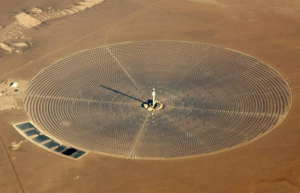A bright future is on the horizon for the global expansion of concentrated solar power (CSP) and thermal energy storage (TES) technologies. As the world increasingly recognizes the need for clean, renewable energy sources to combat climate change and reduce dependence on fossil fuels, CSP and TES are emerging as key players in the transition to a more sustainable energy future.
CSP is a technology that uses mirrors or lenses to concentrate sunlight onto a small area, typically a tower or a series of tubes filled with a heat transfer fluid. This concentrated sunlight heats the fluid, which then generates steam to power a turbine and produce electricity. TES, on the other hand, is a method of storing excess thermal energy produced by CSP plants during periods of low electricity demand. This stored energy can then be used to generate electricity when demand is high, ensuring a stable and reliable supply of power.
One of the primary advantages of CSP and TES technologies is their ability to provide dispatchable, or on-demand, renewable energy. Unlike solar photovoltaic (PV) and wind power, which are intermittent and dependent on weather conditions, CSP with TES can store energy and deliver it when needed, making it an attractive option for grid operators and utilities. This dispatchability is particularly valuable in regions with high solar irradiance, such as the Middle East, North Africa, and the southwestern United States, where CSP plants can generate electricity throughout the day and into the evening.
In recent years, there has been a surge of interest in CSP and TES technologies, driven by a combination of factors, including declining costs, supportive government policies, and growing awareness of the need for clean energy solutions. According to the International Renewable Energy Agency (IRENA), the global installed capacity of CSP reached 6.2 gigawatts (GW) in 2020, with a further 1.8 GW under construction or in advanced stages of development. This represents a significant increase from just a decade ago when the global CSP capacity was less than 1 GW.
One of the most notable examples of CSP and TES expansion is the Noor Ouarzazate Solar Complex in Morocco, which is currently the largest CSP plant in the world. With a total capacity of 580 megawatts (MW), the complex uses parabolic trough and tower technologies, as well as molten salt TES, to generate electricity for over a million people. The success of the Noor Ouarzazate project has inspired other countries in the region, such as Algeria, Tunisia, and Egypt, to pursue their own CSP projects.
Another promising development in the CSP and TES sector is the growing interest from major energy companies and investors. In 2020, the United Arab Emirates-based clean energy group Masdar announced plans to invest in a 100 MW CSP plant with 5 hours of TES in Uzbekistan, marking the first large-scale CSP project in Central Asia. Meanwhile, in the United States, the Department of Energy (DOE) has launched the Solar Energy Technologies Office Fiscal Year 2020 (SETO 2020) funding program, which aims to advance CSP and TES research and development, as well as drive down costs and improve performance.
As the global expansion of CSP and TES technologies continues, it is crucial that governments, industry, and research institutions work together to overcome remaining challenges, such as high upfront costs, technology risks, and market barriers. By fostering innovation, collaboration, and investment in these promising renewable energy solutions, we can pave the way for a brighter, more sustainable future for all.



